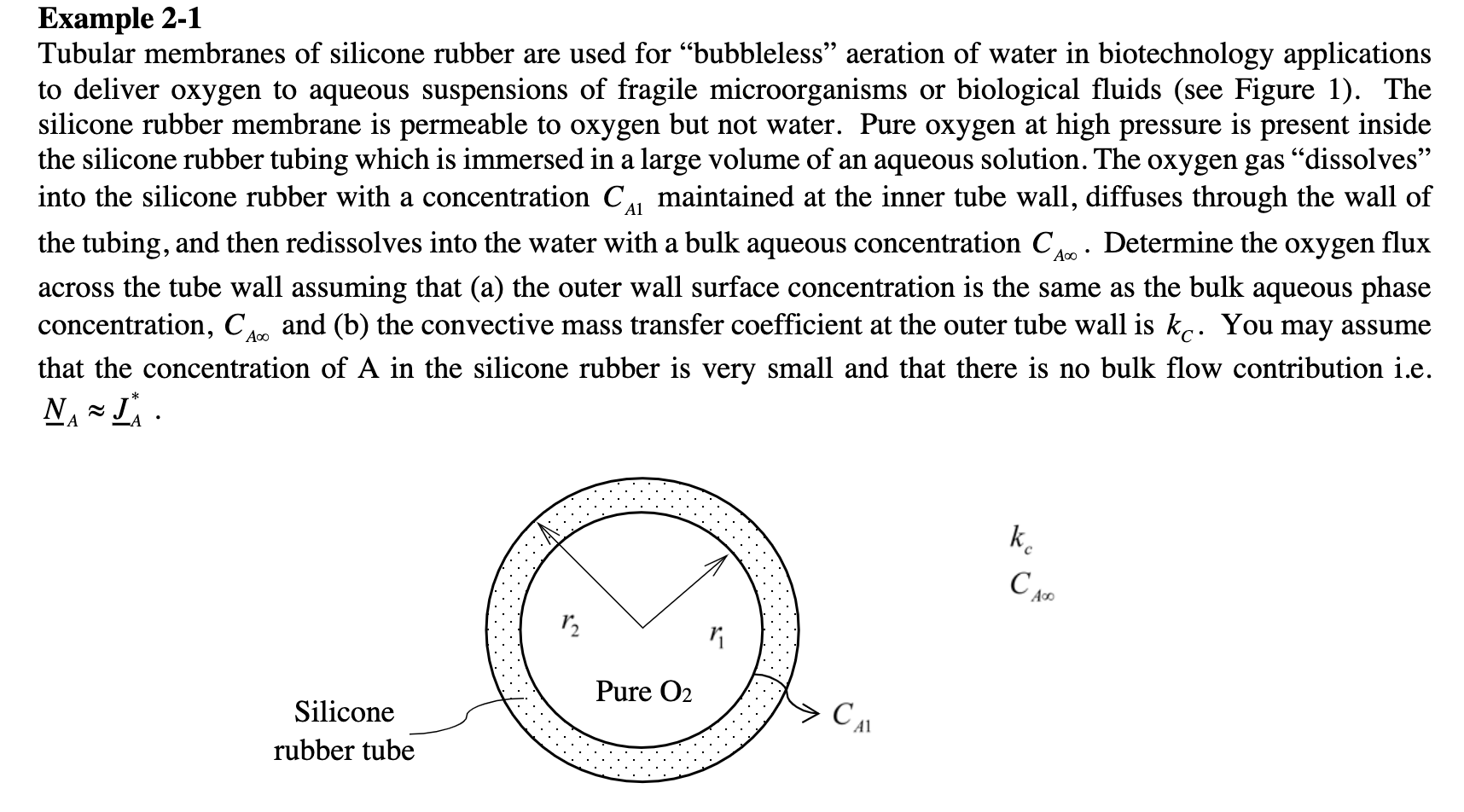 Please solve problem 2 (worth 30 points) using rectangular coordinates. below is the original question
Please solve problem 2 (worth 30 points) using rectangular coordinates. below is the original question
2. (30 points) Rework Example 2-1 (Handout # 2) if the process is carried out with a flat silicone membrane of thickness L. Determine the oxygen flux and concentration profile assuming that (a) the outer wall surface concentration is the same as the bulk aqueous phase concentration, CA, and (b) the convective mass transfer coefficient at the outer tube wall is ke. Example 2-1 Tubular membranes of silicone rubber are used for bubbleless aeration of water in biotechnology applications to deliver oxygen to aqueous suspensions of fragile microorganisms or biological fluids (see Figure 1). The silicone rubber membrane is permeable to oxygen but not water. Pure oxygen at high pressure is present inside the silicone rubber tubing which is immersed in a large volume of an aqueous solution. The oxygen gas dissolves into the silicone rubber with a concentration CA maintained at the inner tube wall, diffuses through the wall of the tubing, and then redissolves into the water with a bulk aqueous concentration CA Determine the oxygen flux across the tube wall assuming that (a) the outer wall surface concentration is the same as the bulk aqueous phase concentration, C and (b) the convective mass transfer coefficient at the outer tube wall is kc. You may assume that the concentration of A in the silicone rubber is very small and that there is no bulk flow contribution i.e. NA ~ J* A1 > ki CA Pure O2 CAL Silicone rubber tube 2. (30 points) Rework Example 2-1 (Handout # 2) if the process is carried out with a flat silicone membrane of thickness L. Determine the oxygen flux and concentration profile assuming that (a) the outer wall surface concentration is the same as the bulk aqueous phase concentration, CA, and (b) the convective mass transfer coefficient at the outer tube wall is ke. Example 2-1 Tubular membranes of silicone rubber are used for bubbleless aeration of water in biotechnology applications to deliver oxygen to aqueous suspensions of fragile microorganisms or biological fluids (see Figure 1). The silicone rubber membrane is permeable to oxygen but not water. Pure oxygen at high pressure is present inside the silicone rubber tubing which is immersed in a large volume of an aqueous solution. The oxygen gas dissolves into the silicone rubber with a concentration CA maintained at the inner tube wall, diffuses through the wall of the tubing, and then redissolves into the water with a bulk aqueous concentration CA Determine the oxygen flux across the tube wall assuming that (a) the outer wall surface concentration is the same as the bulk aqueous phase concentration, C and (b) the convective mass transfer coefficient at the outer tube wall is kc. You may assume that the concentration of A in the silicone rubber is very small and that there is no bulk flow contribution i.e. NA ~ J* A1 > ki CA Pure O2 CAL Silicone rubber tube
 Please solve problem 2 (worth 30 points) using rectangular coordinates. below is the original question
Please solve problem 2 (worth 30 points) using rectangular coordinates. below is the original question






